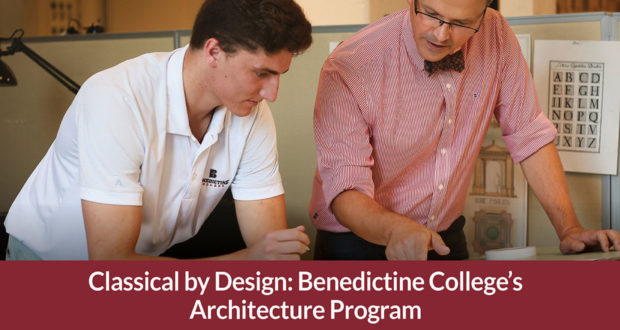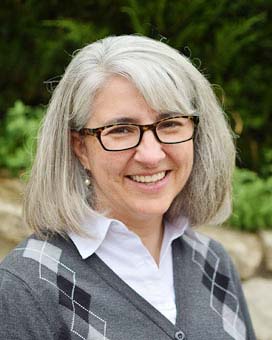Summary
Benedictine’s architecture students are taught time-tested artistic skills and techniques such as drafting, rendering, painting, and drawing by hand.It may seem ironic that one of Benedictine College’s newest majors, the Bachelor of Arts in Architecture, is housed in the oldest building on campus. Added to Benedictine’s list of 50 undergraduate majors in 2016, the classical architecture program is built on a timeless foundation: that the ideals of the true, good, and beautiful hold a place of prominence in the art of designing and building for the sake of living well in family-based communities.
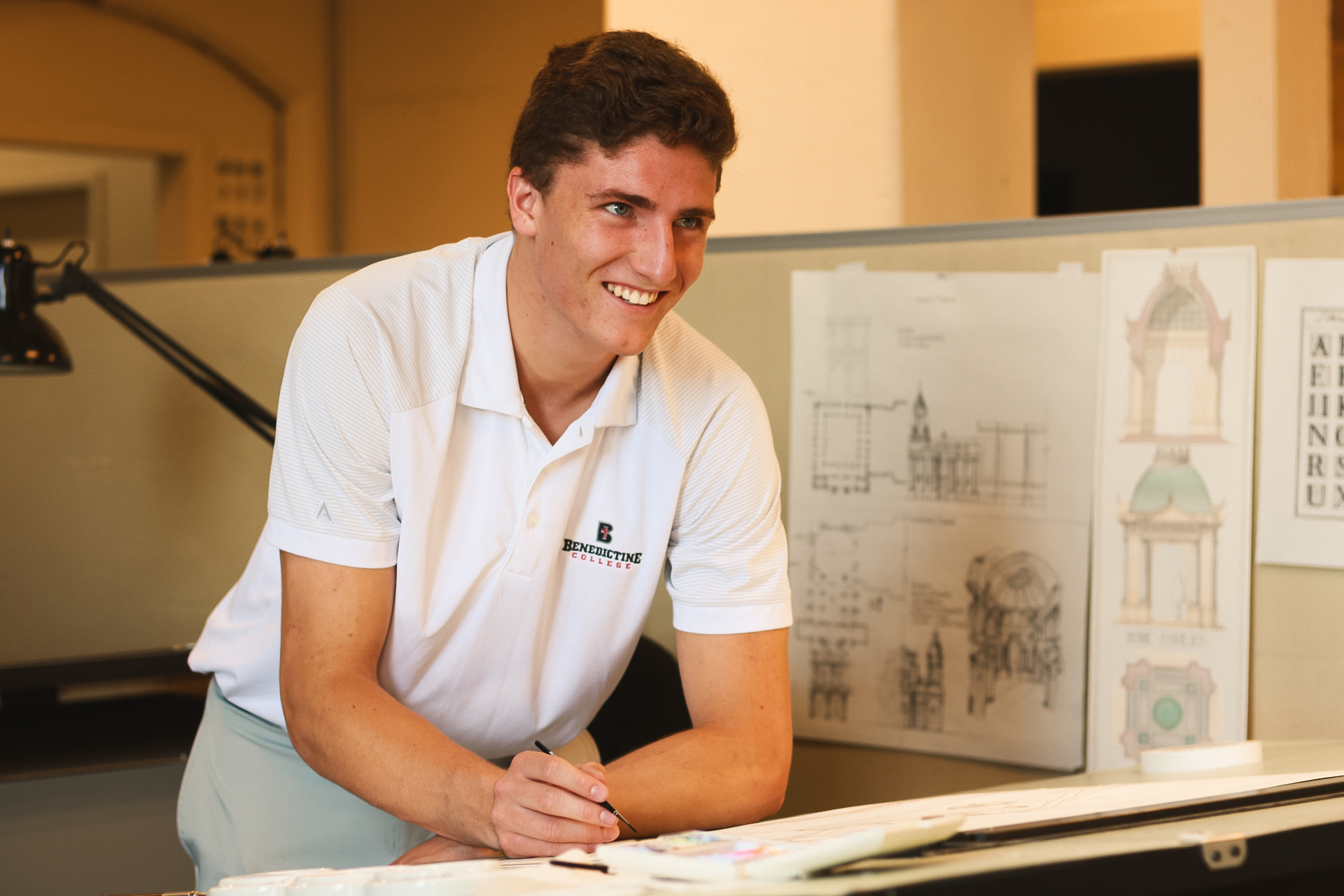
“As we began exploring architecture as a new program, we were increasingly struck with the way this field of study is such a natural fit for our mission,” says Dr. Kimberly Shankman, Dean of the College. “We seek to educate within a community of faith and scholarship; architecture is the study of how to give concrete expression to the idea of community.”
Benedictine’s architecture students are prepared to pursue graduate studies or enter the workforce in roles ranging from landscape architecture to city planning and from interior design to historic preservation.
Real Skills for the Real World
With skills honed through Benedictine’s liberal arts curriculum, these students are sought after by firms that “value employees who know how to think for themselves, and who tackle problems through the lens of a broad frame of references,” according to John Haigh, Chair of the Architecture Department and Assistant Professor. “We take pride that all our architecture courses have been designed to integrate with a singular philosophy that is rooted in the Benedictine tradition and the general liberal arts education.”
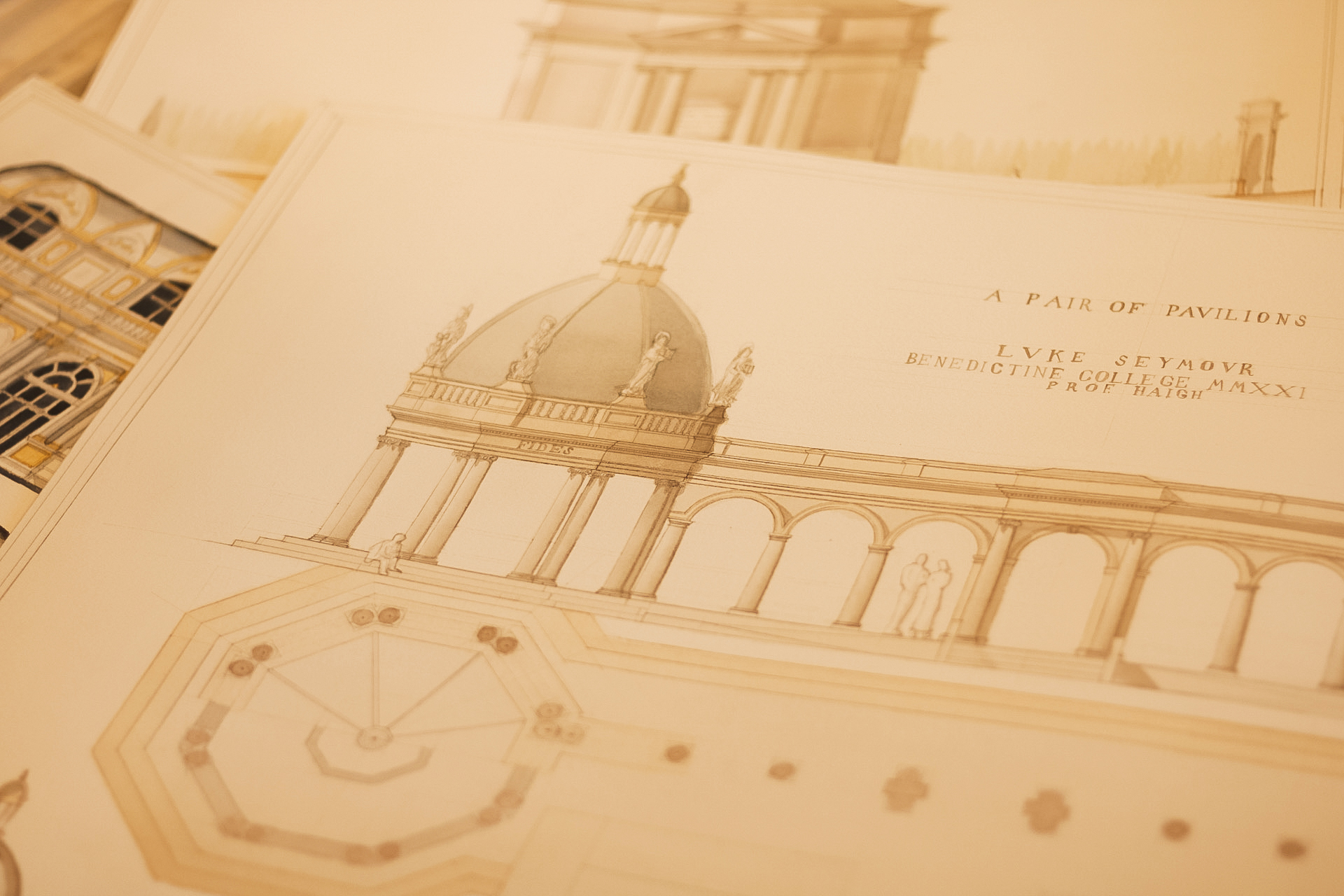
“Educating future architects who also study theology and philosophy as part of the college’s liberal arts curriculum has the capability of producing architects who understand architecture’s sacramental and revealing role in the formation of what people used to call the ‘good life,’” explains Dr. Denis McNamara, associate professor and Executive Director of Benedictine College’s Center for Beauty and Culture. “To let architecture be part of the beautification of the world, and draw people to God that way, that’s a really special opportunity, and Benedictine is doing that.”
Such a program is exceedingly rare.
A ‘One of a Kind’ Program
“What Benedictine has is a classical liberal arts curriculum and a fully Catholic studio design program, which as far as I can tell is the only one in the world. Benedictine’s program is the only one that has a 100% classical curriculum taught by people of faith,” according to Dr. McNamara.
In addition to the college’s general education requirements and courses in art, engineering, math and physics, Benedictine’s architecture students are taught time-tested artistic skills and techniques such as drafting, rendering, painting, and drawing by hand.
According to Haigh, “While it’s not quite so simple, I have been told by professional architects that all we must do is teach our students to sketch by hand and they will be head and shoulders above their peers. We do much more than that! And we do not discount the fact that the industry runs on the exchange of data and information transmitted electronically.”
Haigh continues, “We want our students to be able to think outside the box, literally, and judiciously approach the tools of technology. A hand sketch on a job site or in a meeting can save a client tens of hours of back-and-forth, and ultimately many thousands of dollars through the span of a project.”
Benedictine’s architecture program offers students local field study experiences, a four-week summer study abroad opportunity in Italy, a favorable faculty to student ratio, access to some of today’s great figures of classical architecture, and a longstanding relationship with the Institute of Classical Architecture and Art.
And as it turns out, housing a classical architecture department in the oldest building on campus is a pretty good idea.
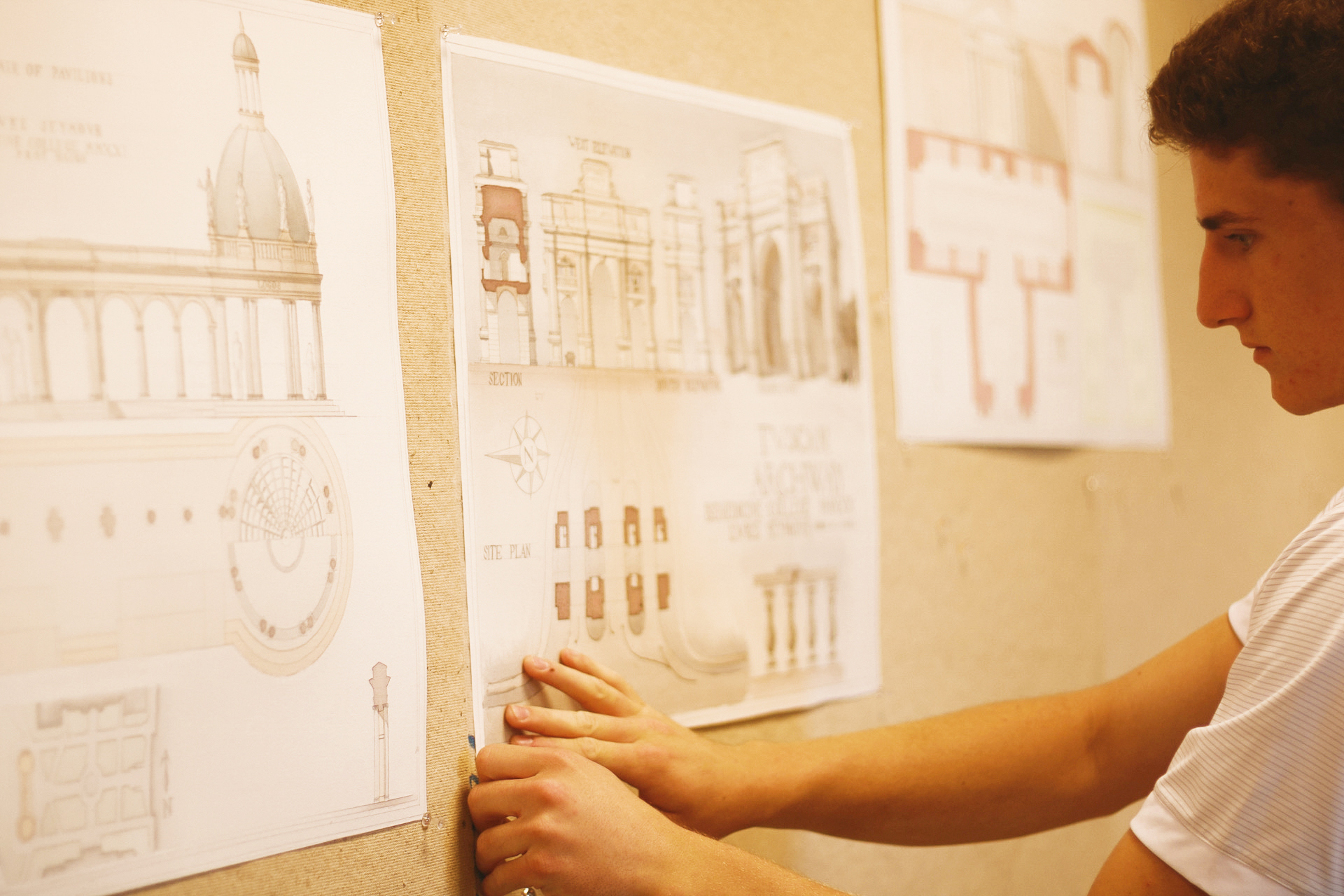
“Our studios are located in the dormered fifth floor of historic Bishop Fink Hall, one of the original abbey buildings dating to the nineteenth century. In some ways, the building has too much character, but it is truly lovable and presents many learning opportunities for the students to compare differences in construction methods and design over the past two centuries. You can see all the structure, you can see the exposed brick, and you can get a sense of how buildings are actually made.”

 Seton Magazine Catholic Homeschool Articles, Advice & Resources
Seton Magazine Catholic Homeschool Articles, Advice & Resources
